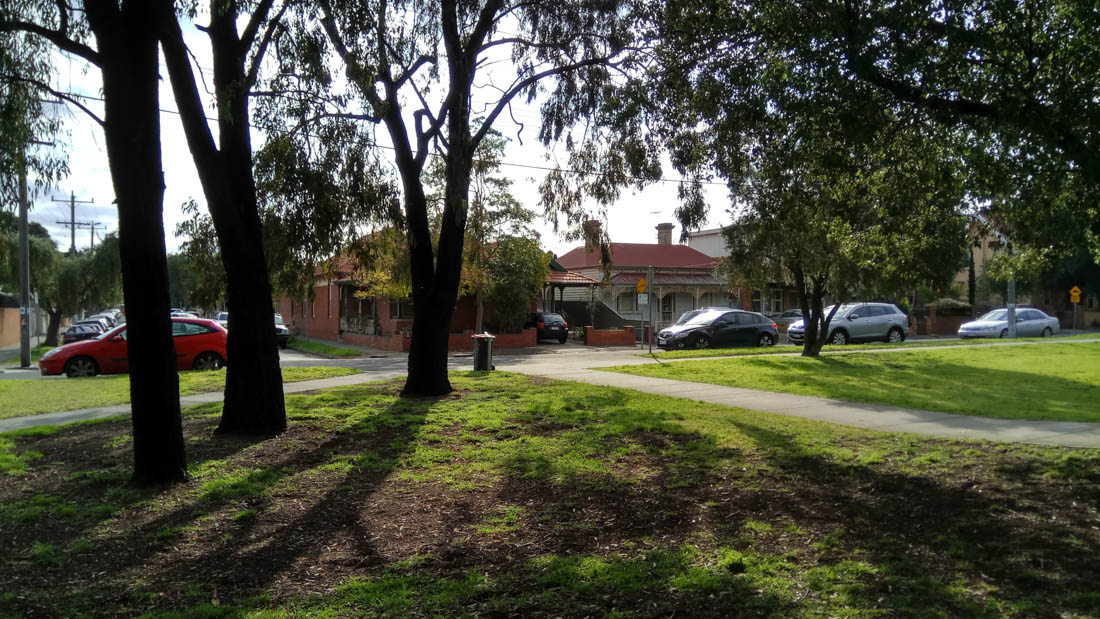Cameras
One of the main selling points to the Redmi Pro is the dual camera system on the rear. Dual cameras have become a popular feature in a range of smartphones this year, and their implementations vary greatly between manufacturers. Apple, for example, uses the second camera on the iPhone 7 Plus to provide 2x zoom, while LG's second camera features an ultra-wide angle lens. The Redmi Pro, on the other hand, uses an implementation that's similar to the Huawei P9, where the two cameras combine data for refocusing and simulated depth of field effects.
Xiaomi's implementation isn't a direct copy of what Huawei provided earlier this year. The P9 used two 12-megapixel sensors, one full color and the other monochrome, with that monochrome sensor providing additional detail. The Redmi Pro, however, uses a main 13-megapixel sensor with an additional 5-megapixel unit providing depth data. In this respect the Redmi Pro is more closely related to the HTC One M8, which used a similar system back in 2014.
The primary 13-megapixel camera is a Sony IMX258 1/3.06" CMOS sensor with 1.12µm pixels, paired with an 25mm (effective) f/2.0 lens and a two-tone LED flash. The secondary depth camera is a 5-megapixel Samsung sensor with an undisclosed lens. On the front, we're looking at a 5-megapixel sensor paired with an f/2.0 lens, which provides an 85-degree field of view.
The quality of the Redmi Pro's main camera is acceptable, but it's clear that despite the hardware that is included, this is not a camera that will compete with high-end devices. Most photos rival what is created by a mid-range or entry-level phone like the Moto G4, however improvements to the processing are needed to elevate this camera beyond mid-range territory.
 |
 |
Photos produced by the Redmi Pro have an average amount of detail for a 13-megapixel camera, with Xiaomi only applying a minor noise reduction filter. Images don't have a lot of fine detail when viewing 100% crops, however I prefer this to the dreaded 'oil painting effect' that can occur when heavy post-processing is applied. The main downside here is that minimal noise reduction leads to grain in some low light photos.
This is a 100% crop of an image of a printed circuit board
Dynamic range from the rear sensor is decent without being spectacular; I'm glad there is a good automatic HDR feature to enhance dynamic range in high-contrast situations. Due to the use of an f/2.0 lens, bokeh is above average by default with a pleasant background blur, however the wide aperture can lead to mild chromatic aberrations in brightly lit environments. You probably won't notice the issue until you zoom in on the photos you've taken.
 |
 |
Color performance is a bit hit or miss, unfortunately, which is typical of a mid-to-low-range smartphone camera. When you're shooting outdoors and in strongly lit environments, the Redmi Pro can produce excellent photos with accurate colors. If the lighting conditions aren't perfect, the Redmi Pro has a tendency to somewhat undersaturate colors so that they don't pop as much as the 'real life' scene, and this is particularly noticeable with indoor shots.
Notice the blurred minifg face on the left? This photo was taken in stereo mode, and that's an issue with the depth camera
With that said, not every indoor shot I took looks undersaturated or underwhelming. Some photos delivered accurate, vibrant colors with perfect exposure and white balance. However, the inconsistency that I experienced in this sort of lighting isn't something that you get with the Galaxy S7 or iPhone 7, and this is largely where the Redmi Pro falls short.
At night, the Redmi Pro produces surprisingly bright and vibrant images for a camera that lacks optical image stabilization and large sensor pixels. Autofocus can struggle in low light, and some nighttime photos I took were blurry and reasonably grainy, although I was impressed with how well the Redmi Pro handles low light in general.
The five-megapixel front camera won't set any quality records, but it's a capable selfie camera that again works reasonably well indoors and in low light. Like with the rear camera, grain is an issue in low light scenarios, and color performance isn't spectacular by any means. In general, though, this camera should be fine for the casual selfie.
 |
 |
Obviously the main talking point about this camera is the secondary rear sensor that provides depth effects. Having used the Huawei P9 that provides similar functionality, I was eager to try out what the Redmi Pro provides. Unfortunately, Xiaomi's implementation is not as good as Huawei's, which leads to lackluster simulated bokeh effects.
This complicated Lego model provided significant issues for the depth senor
Like on the Huawei P9, depth effects are accessed through a button that brings up a simulated f-stop slider, with options ranging from f/0.95 (lots of background blur) to f/5.6 (no background blur at all). The slider is also available in the gallery app for photos taken in the stereo mode, so you can change the amount of bokeh after the fact, with refocusing functionality also available in the same interface.
Firstly, there are clear differences between stereo photos taken directly with the camera app and stereo photos edited using the gallery. Setting the bokeh to f/1.4 in the camera app, for example, delivers mild background blur in captured photos, but if you adjust a previously-captured photo to f/1.4 in the gallery, the background blur is significantly better and more pronounced. The discrepancy between camera and gallery results is unusual, because I normally would expect both to apply the same simulations.
Secondly, while the bokeh itself does look remarkably like what you'd get from a quality DLSR lens, the depth calculations used to apply bokeh are seriously lacking. I had numerous issues trying to get the Redmi Pro to accurately determine where bokeh should be applied, and when it doesn't work perfectly, the results are terrible. A number of photos I took had foreground objects incorrectly blurred, or poor edge detection that slightly blurred the edges of objects creating a weird halo effect.
The good news here is that the refocusing effect does work reasonably well, so long as you haven't taken a very close macro shot. But I didn't find myself using the refocusing effect all that often because it simply doesn't work as well as I'd like.
The Redmi Pro includes a number of other shooting modes, including a limited and largely disappointing manual mode; a basic panorama mode; and a Hand Held Twilight (HHT) mode that captures and combines multiple images in low light for better results.
Video functionality is limited to 1080p at 30 FPS on the rear camera, or 720p at 120 FPS for slow motion. The lack of optical image stabilization hurts the smoothness of videos, however quality is decent in general. I'd have liked to see a 1080p60 mode to get a bit more quality out of the video mode, or even 4K if Xiaomi was truly positioning the Redmi Pro as a flagship handset.







